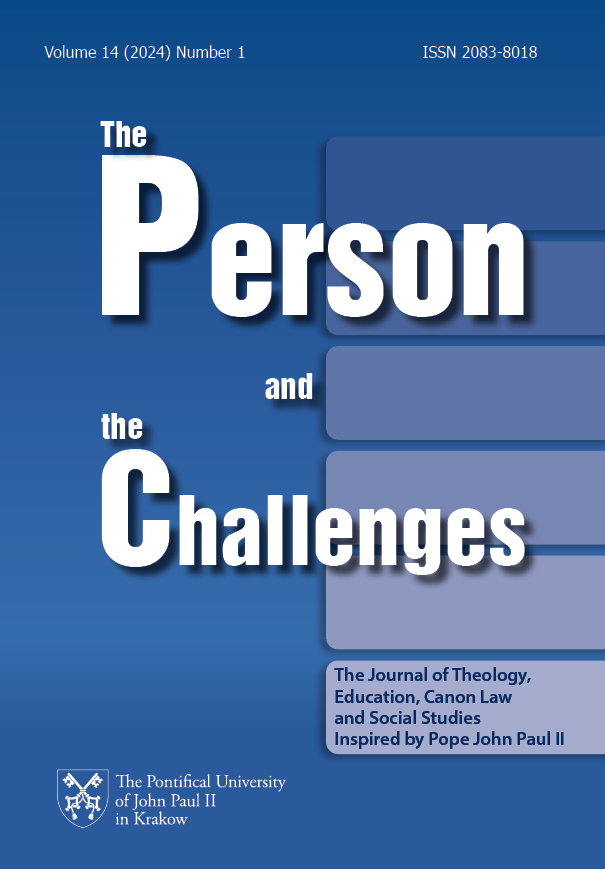Social Media and Body Image from the Perspective of Secondary School Youth
DOI:
https://doi.org/10.15633/pch.14112Słowa kluczowe:
social media disorder, social media, secondary school youth, body imageAbstrakt
The study aimed to map the prevalence of social media disorder in secondary school youth. We used an abbreviated version of the Social Media Disorder Scale (SMD) and the Body Shape Questionnaire (BSQ-16B). The reliability of the questionnaires used in the research, indicates that they have sufficient internal consistency. A total of 637 re-respondents participated in the study. Their ages ranged from 15 to 19 years (AM=16.63). The results of the study showed social media impairment in 11.1% of the respondents, confirming a statistically significant difference in terms of the gender of the adolescents in favour of girls, and in terms of the degree of concern about their appearance, in favour of those who are more concerned about their appearance. Furthermore, a statistically significant difference in the degree of concern about their appearance in terms of gender, was confirmed in favour of girls.
Bibliografia
Anderson M., Jiang J., Teens, social media & technology, “Pew Research Center” máj 31, 2018, https://www.pewresearch.org/internet/2018/05/31/teens-social-media-technology-2018/.
Cooper P.J., Taylor M.J., Cooper Z., Fairburn C.G., The development and validation
of the body shape questionnaire, “International Journal of Eating Disorders” (1987) 6(4), https://doi.org/10.1002/1098-108X(198707)6:4%3C485::AID-EAT2260060
%3E3.0.CO;2-O.
Cory A.L., S.R. Burns, What did she say? An examination of the influence of conversation and media exposure on participant’s body objectification and anxiety, “Psi Chi Journal of Undergraduate Research” (2007) 12(3), pp. 97–103, 10.24839/1089-4136.JN12.3.97.
Ergun G., Alkan A., The Social Media Disorder and Ostracism in Adolescents: (OSTRACA- SM Study), “Eurasian J Med” (2020) 52(2), pp. 139–144, https://doi.org/10.5152%2Feurasianjmed.2020.19076.
Evans C., Dolan B., Body Shape Questionnaire: derivation of shortened “alternate forms”, “International Journal of Eating Disorders” (1993) 13(3), pp. 315–321, DOI: https://psycnet.apa.org/doi/10.1002/1098-108X(199304)13:3%3C315::AID-EAT2260130310%3E3.0.CO;2-3.
Fialová L., Body Image jak součást sebepojetí člověka, Praha 2001, Karolinum.
Fischer S., Škoda J., Sociální patologie. Závažné sociálně patologické jevy, příčiny, prevence, možnosti řešení, Praha 2014, Grada Publishing, a.s.
Fuchs C., Social Media: A Critical Introduction, London 2017, Sage, https://uk.sagepub.com/en-gb/eur/social-media/book250870.
Grogan S., Body image: psychologie nespokojenosti s vlastním tělem, Praha 2000, Grada Publishing a.s.
Holland G., Tiggemann M., A systematic review of the impact of the use of social networking sites on body image and disordered eating outcomes, “Body image” (2016) 17, pp. 100–110, https://doi.org/10.1016/j.bodyim.2016.02.008.
Lašek J., Kalibová P., Andršová J., Adolescents and Information and Communication Technologies: Use and a Risk of Addiction, “The New Educational Review” (2016) 44, pp. 72–83. DOI: 10.15804/tner.2016.44.2.06.
Kelly Y., Zilanawala A., Booker C., Sacker A., Social media use and adolescent mental health: findings from the UK millennial cohort study, “EClinical Medicine” (2018) 6, pp. 59–68, 10.1016/j.eclinm.2018.12.005.
McCabe M., Butler K., Watt C., Media influences on attitudes and perceptions toward the body among adult men and women, “Journal of Applied Behavioural Research” (2007) 12(2), pp. 101–118, https://doi.org/10.1111/j.1751-9861.2007.00016.x.
Meikle G., Social Media: Communication, Sharing and Visibility, New York 2016, Routledge, https://www.academia.edu/28542640/Social_Media.
Mistrík E., Sejčová Ľ., Dobrý život a kult tela, Bratislava 2008, Album, http://erichmistrik.sk/knihy/telo.pdf.
Mulgrew K.E., Volcevski-Kostas D., Short term exposure to attractive and muscular singers in music video clips negatively affects men’s body image and mood, “Body image” (2012) 9, pp. 543–546, https://doi.org/10.1016/j.bodyim.2012.05.001.
Padilla‐Walker L.M., Coyne S.M. & Fraser A.M., Getting a high-speed family connection: Associations between family media use and family connection. Family Relations, “Interdisciplinary Journal of Applied Family Studies” (2012) 61(3), pp. 426–440, https://doi.org/10.1111/j.1741-3729.2012.00710.x.
Radesky J., Miller A., Rosenblum K.L., Appugliese D., Kaciroti N., Lumeng J.C., Maternal mobile device use during a structured parent-child interaction task, “Acad Pediatr” (2015) Mar-Apr., 15(2), pp. 238–44, DOI: 10.1016/j.acap.2014.10.001.
Royal Society For Public Health, Status of Mind: Social Media and Young People’s Mental Health and Wellbeing, 2017, https://www.rsph.org.uk/static/uploaded/d125b27c-0b62-41c5-a2c0155a8887cd01.pdf.
Stackeová D., Tělesné sebepojetí v kontextu psychosomatiky a možnosti jeho ovlivnění, 2007, https://adoc.pub/tlesne-sebepojeti-v-kontextu-psychosomatiky-daniela-stackeov.html.
Steinsbekk S., Wichstrøm L., Stenseng F., Nesi J., Wold Hygen B., Skalická V., The impact of social media use on appearance self-esteem from childhood to adolescence – A 3-wave community study, “Computers in Human Behavior” (2021), 114, https://www.sciencedirect.com/science/article/pii/S0747563220302806.
Sowislo J.F., Orth U., Does Low Self-Esteem Predict Depression and Anxiety? A Meta-Analysis of Longitudinal Studies, “Psychological Bulletin” (2013) 139(1), pp. 213–240, 10.1037/a0028931.
Správa o mládeži, IUVENTA – Slovenský inštitút mládeže, 2018, https://www.iuventa.sk/files/som/som-sprava%20o%20mladezi%202018_popularizovana.pdf.
Statista Research Department, Jul 26, 2022, https://www.statista.com/statistics/617136/digital-population-worldwide/.
The New Normal: Parents, Teens, Screens, and Sleep (2019), https://www.commonsensemedia.org/research/the-new-normal-parents-teens-screens-and-sleep.
Van den Eijnden R.J.J.M., Lemmens J.S., Valkenburg P.M., The Social Media Disorder Scale, “Computers in Human Behavior” (2016) 61, pp. 478–487, 10.1016/j.chb.2016.03.038.
Vágnerová M., Vývojová psychologie. Dětství a dospívání, Praha 2012, Univerzita Karlova v Praze.
Zhao S., Grasmuck S., Martin J., Identity Construction on Facebook: Digital Empowerment in Anchored Relationships, “Computers in Human Behavior” (2008) 24 (5), pp. 1816–1836, 1016/j.chb.2008.02.012.
Youssef L., Hallit R., Kheir N., Obeid S., Hallit S., Social media use disorder and loneliness: any association between the two? Results of a cross-sectional study among Lebanese adults, “BMC Psychology” (2020) 8, Article number: 56, 10.1186/s40359-020-00421-5.
Pobrania
Opublikowane
Numer
Dział
Licencja

Utwór dostępny jest na licencji Creative Commons Uznanie autorstwa 4.0 Międzynarodowe.
Autorzy publikujący w czasopiśmie udzielają jego wydawcy zgody o następującej treści:
- Autor zachowuje autorskie prawa majątkowe do utworu, a jednocześnie udziela wydawcy czasopisma zgody na jego pierwszą publikację w wersji drukowanej i wersji online na licencji Creative Commons Uznanie autorstwa 4.0 Międzynarodowe oraz zgody na wykonywanie opracowań, w tym przekładów.
- Autor ma możliwość udzielania zgody niewyłącznej na opublikowanie utworu w wersji, która ukazała się w czasopiśmie (np. zamieszczenia go w repozytorium instytucjonalnym lub opublikowania w książce), wraz z informacją o jego pierwszej publikacji w czasopiśmie.
- Autor może umieścić swój utwór online (np. w repozytorium instytucjonalnym lub na swojej stronie internetowej) jeszcze przed zgłoszeniem utworu do czasopisma.

